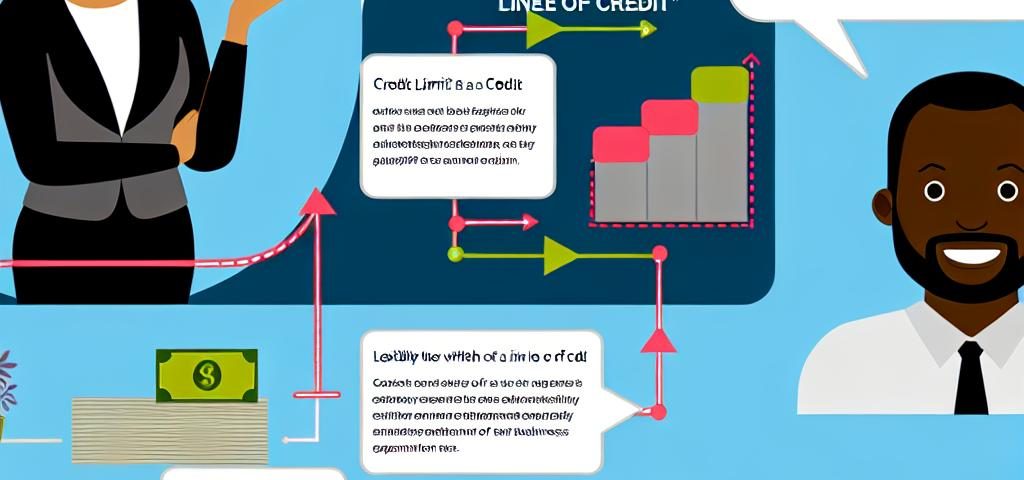Understanding a Line of Credit
A line of credit is a financial instrument that provides substantial flexibility to borrowers. It represents an agreement between a lender, often a bank or a credit union, and a borrower, where the lender specifies a maximum amount of funds that the borrower can access. This upper limit can be drawn upon as needed, providing the borrower with a versatile tool to manage their finances more effectively. Unlike traditional loans that disburse a fixed sum upfront, a line of credit allows the borrower to withdraw only the required amount at any given time, making it a valuable resource for managing various financial needs.
How a Line of Credit Works
The functionality of a line of credit is distinct when compared to other financial products. Borrowers can utilize this credit arrangement for various purposes, such as managing short-term cash flow gaps, financing substantial purchases, or handling unforeseen expenses that might arise. Once approved for a line of credit, the borrower can withdraw funds up to the maximum limit during a specific draw period. This draw period represents the timeframe during which funds can be accessed, and it can vary significantly based on the agreement terms between the borrower and the lender.
A remarkable feature of lines of credit is the interest obligation, which only applies to the funds that have been drawn. Interest is not levied on the entire pre-approved credit limit, which can lead to cost savings. Another critical aspect involves the interest rate attached, which can either be fixed or variable. Fixed interest rates remain constant over the repayment period, providing predictability in planning finances. In contrast, variable interest rates are subject to change based on market conditions, which can cause fluctuations in borrowing costs.
Secured vs. Unsecured Lines of Credit
Lines of credit are broadly categorized into two types based on their backing: secured and unsecured.
- Secured Line of Credit: In this type, the borrower is required to offer some form of collateral, such as real estate, a vehicle, or savings, as a guarantee for the borrowed funds. This adds a layer of security for the lender, as they have a claim on the collateral in the event of default. The presence of collateral typically reduces the risk for the lender, potentially resulting in more favorable interest rates.
- Unsecured Line of Credit: This type does not require the borrower to back the borrowed amount with collateral, hence elevating the risk for the lender. Due to this increased risk, unsecured lines of credit often come with higher interest rates, as lenders attempt to mitigate potential losses from defaults.
Common Types of Lines of Credit
Several distinct forms of lines of credit are tailored to meet varying financial needs:
- Personal Lines of Credit: Primarily used for individual expenses, these lines are generally unsecured. They offer consumers the flexibility to manage personal financial needs without tying up collateral.
- Home Equity Lines of Credit (HELOC): These are secured lines of credit, utilizing the equity in a home as collateral. They are often employed for home renovations, education expenses, or other significant financial needs. Given the nature of real estate as collateral, HELOCs might offer lower interest rates compared to other unsecured options.
- Business Lines of Credit: Essential for enterprises, these lines are designed to help businesses manage cash flow, cover operating costs, or invest in capital expenditures. They provide companies with the financial agility needed to capitalize on growth opportunities or navigate financial constraints.
Managing a Line of Credit
Proper management of a line of credit is crucial to ensure that it serves its purpose effectively and supports the borrower’s financial strategy. Here are some important aspects to consider:
- Repayment Strategy: Developing a structured and realistic plan for repaying borrowed amounts is fundamental. Borrowers should aim to clear debts promptly to avoid interest build-up and potential financial strain. Regular payments into the line of credit can help maintain a healthy borrowing profile.
- Monitoring Usage: Keeping a close watch on how the borrowed funds are used is vital for ensuring that the funds are deployed efficiently. It’s important to differentiate between necessary and discretionary uses of borrowed credit to maximize financial advantages.
- Credit Health: Monitoring credit reports and scores frequently is recommended since they can impact the terms and limits of both current and future lines of credit. A healthy credit score can provide leverage in negotiating more favorable terms and access to larger credit limits.
For further insights into managing finances and understanding the nuances of financial products, borrowers are encouraged to visit comprehensive financial resources available online.

